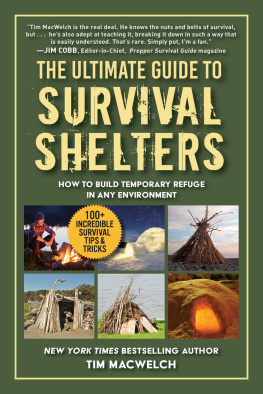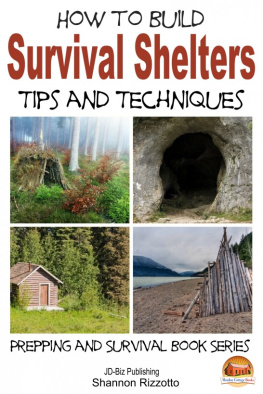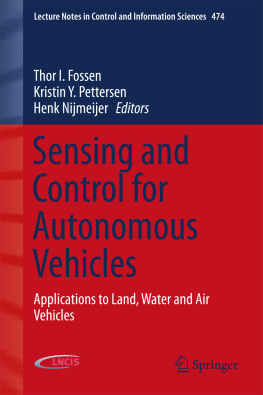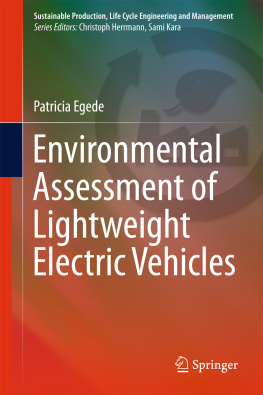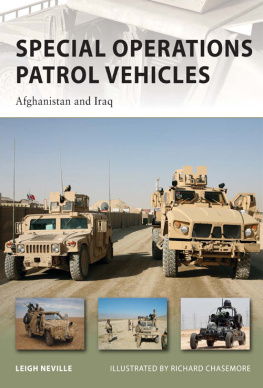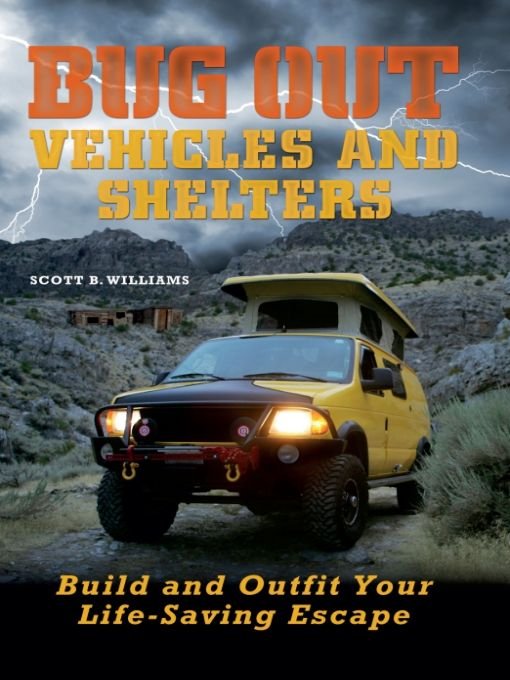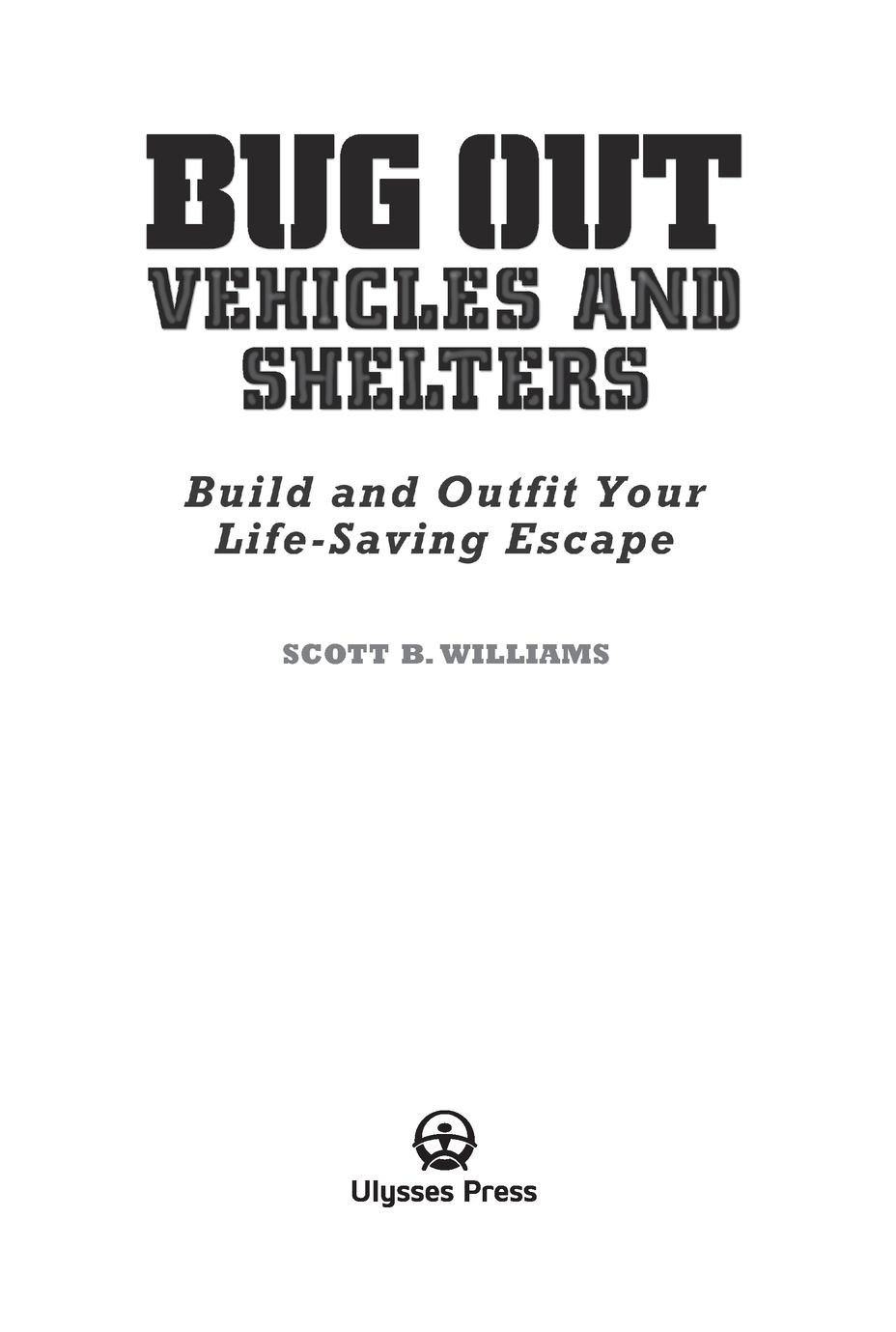Table of Contents
For my brother Frank,
a true vehicle enthusiast who has owned and tested just about
every kind of automobile, motorcycle, boat, RV, ATV, and bicycle
known to man.
ACKNOWLEDGMENTS
As always, I am grateful for the love and support of my dear fiance, Michelle, for her help and encouragement in putting all this together and keeping me motivated through another big project.
Keith Riegert and the rest of the staff at Ulysses Press have once again steered me in the right direction to distill this information into a better book than I envisioned, and I am grateful for their continued faith in my work that has led to this series of survival titles.
Most of what I know today about motor vehicles began with what I was taught by my father, who insisted from the time I learned to drive that I know how to maintain and repair my own vehicles, and from my two older brothers, Frank and Jeff, from whom Ive learned how to choose and repair a variety of cars, trucks, and motorcycles. I also want to thank a longtime reader of my Bug Out Survival blog and previous books, Dustin Tarditi, for his advice regarding off-road driving and off-road vehicles.
My experience with boating goes back to childhood youth group trips led by Dr. F.W. Tripp of my hometown. That experience was later enhanced by thousands of miles of canoe trips with my longtime paddling partner, Ernest Herndon. Im indebted to sea kayaking legend John Dowd for tips and pointers that probably saved my life on my first solo kayaking voyage to the Caribbean, and Im grateful to Ben and Sylvia Olsen of Whisper, Lawrence Pitcairn of Heron I, and Josephine Adams of Celebration for teaching me how to sail cruising boats on that same trip. From my good friend and master boatbuilder David Halladay of Boatsmith, Inc., I have learned skills that have taken my understanding of yacht carpentry and boatbuilding to a whole new level and allowed me to write about the subject of DIY boats from extensive personal experience. I am also indebted to another friend, yacht designer Reuel Parker, for his insights in boat design and the practical aspects of living aboard and bugging out on a variety of unique, shallow-draft craft.
Finally, over the years I gained an entirely different perspective on long-distance bicycling and proper pedaling and training techniques from my cousin Rick Venturini, a lifelong cycling and road racing enthusiast who was occasionally willing to ride with a novice like me.
INTRODUCTION
Mobility can be the key to survival. You only have to watch the current news to see how natural disasters, outbreaks of disease, acts of random violence, and terrorism and larger-scale conflicts overtake those who are unable to get out of the path of danger. Certainly there are times when staying in place and seeking shelter is appropriate; but there are also situations where your current location quickly becomes untenable and if you wish to survive, along with your family and other loved ones, you had better be prepared to leaveor bug out. At the most basic level, this will entail walking or running on foot. But with the huge array of machinery available today to move us from place to place, we have more and better transportation options than any of our predecessors in human history. This book looks at how you can use those options to survive in an emergency, as well as how some of the means of travel that we take for granted in everyday life may quickly cease to be viable. This information will enable you to consider the options and make the best choices to enable you and your family to be self-sufficient when it comes to mobility. Forget about any form of public transportation, as such systems will likely be inoperable or crowded beyond capacity. One only has to look at the lessons from a natural disaster like Hurricane Katrina to realize that those without their own means of evacuation can easily become helplessly trapped and at the mercy of whatever events unfold next.
People have always desired to move about on land and water, whether out of necessity or simply to satisfy their curiosity about other places, and have long endeavored to develop new and more efficient ways of doing so. With our ability to travel at high speeds, long distances mean little today, and for many the simple act of being in motion is such an enjoyable experience that for them the use of vehicles is more recreational in nature than essential. Regardless of whether you drive a car, ride a motorcycle, pedal a bicycle, or operate a boat for pleasure or because you have to get somewhere, in the event of a major disaster or a change in conditions caused by a larger breakdown of society, the ability to get around that we all take for granted could suddenly become much more challenging. But unless you are reduced to the last resort of walking, chances are any planned or unplanned evacuation you might find yourself forced to undertake will involve some sort of vehicle. Choosing the one that is right for you is the main subject of this book, which is a logical expansion of one of the key elements of bug-out planning that I presented in Bug Out: The Complete Plan for Escaping a Catastrophic Disaster Before Its Too Late.
The heart of that book focused on the where-to aspect of bugging out, and I wrote it because I perceived a huge gap in that part of the equation among all the excellent how-to survival books available at the time. Most discussions of the specifics of where to go if you have to bug out were vague at best, and I wanted to offer my ideas on the kinds of places I would choose in different regions if I lived there and had to find a safe refuge in a hurry. Realizing I had spent a large part of my life seeking out and spending time exploring remote places and wildlands throughout the Lower 48 states, I wanted to share my experiences with readers who may not have had time to do the same. Breaking the country down into eight distinct regions, I discussed the available resources, potential hazards, probable weather conditions, and other advantages and disadvantages of each, then pointed out some specific locations that were representative of each region. I also covered the basics of how to find your own bug-out locations by using tools such as topographical maps, Google Earth, and, of course, your own preliminary scouting trips. Then there was a chapter that presented an overview of transportation options, covering such bug-out vehicles as trucks and SUVs, motorcycles and ATVs, bicycles, a variety of boats from canoes to large cruisers, and even pack animals.
Because I had a lot of ground to cover on the main subject of that bookthe bug-out locationsthe material on preliminary preparations such as the bug-out bag and bug-out vehicles had to be limited. Because there is so much more detailed information on the subject of bug-out vehicles that I wanted to share then but could not, I have now put together this guide to the vehicles, boats, and additional equipment needed to help you effect a timely escape in the event of a catastrophic disaster or major Shit-Hitting-the-Fan (SHTF) event. My intention is to cover not only the usual options people consider in their preparations, but also some alternative ideas you may not have considered or may be less familiar with. Being well prepared to bug out doesnt necessarily mean you must have the latest and greatest high-tech SUV, boat, RV, motorcycle, or bicycle. In this book, I will present lower-cost options such as fixer-uppers, do-it-yourself projects, or even build-it-yourself alternatives, wherever practical.



